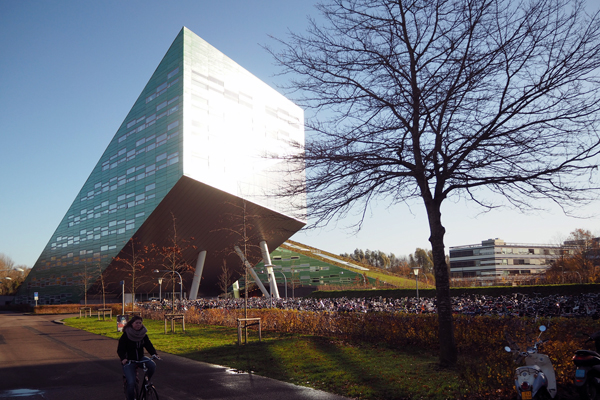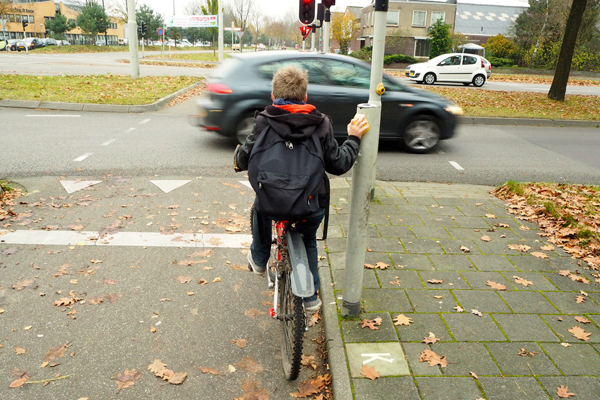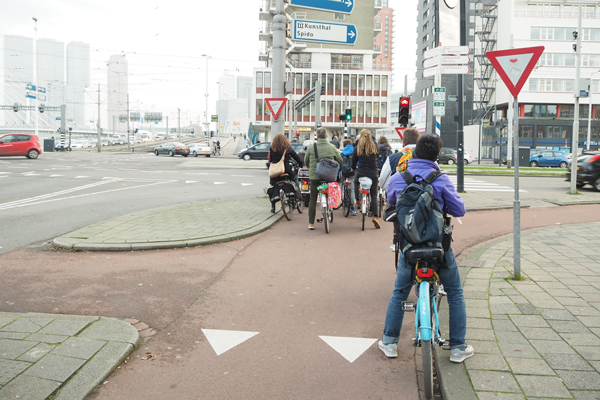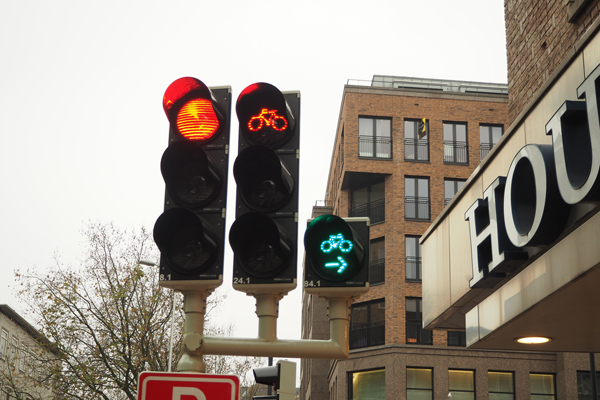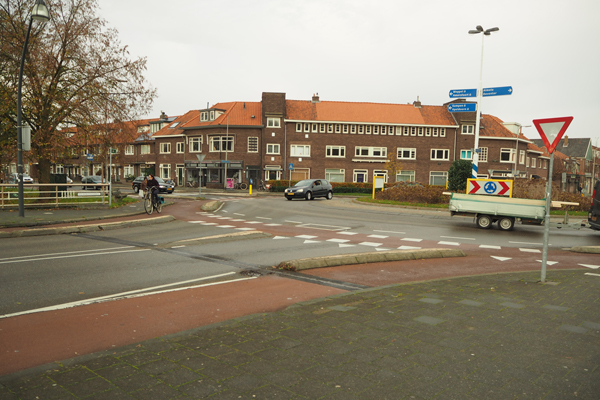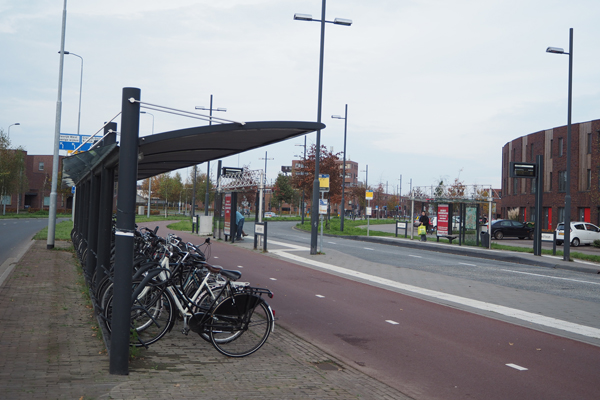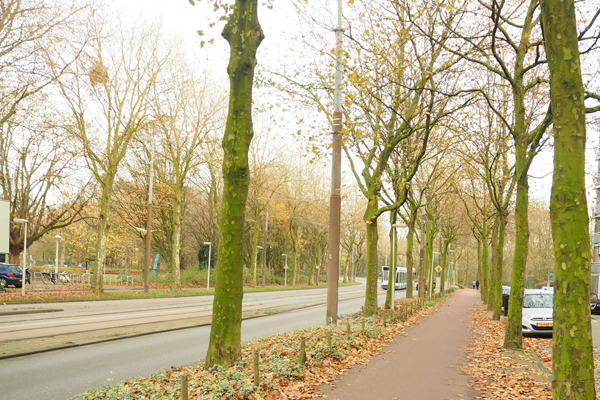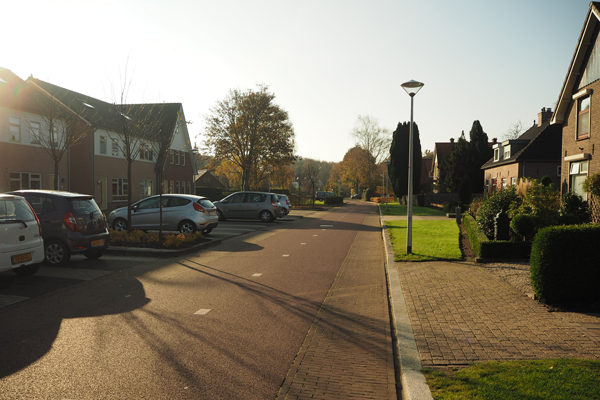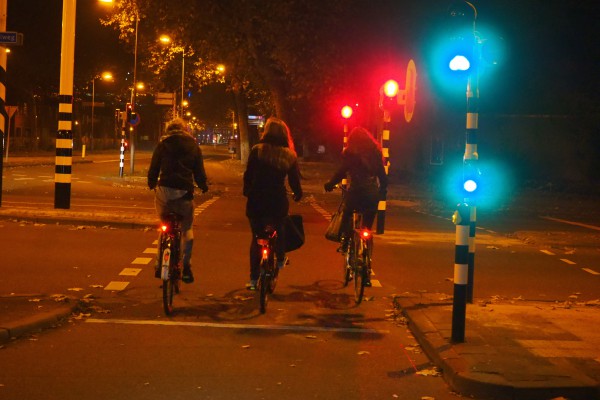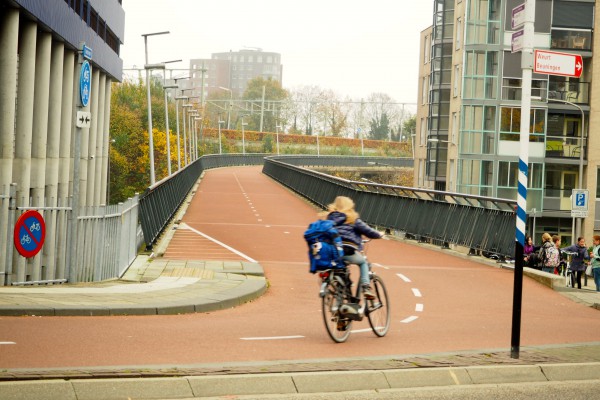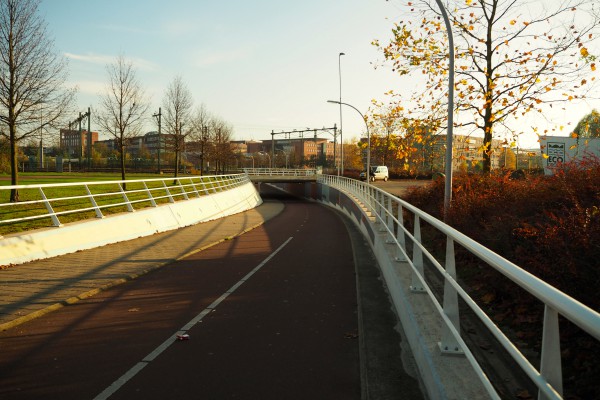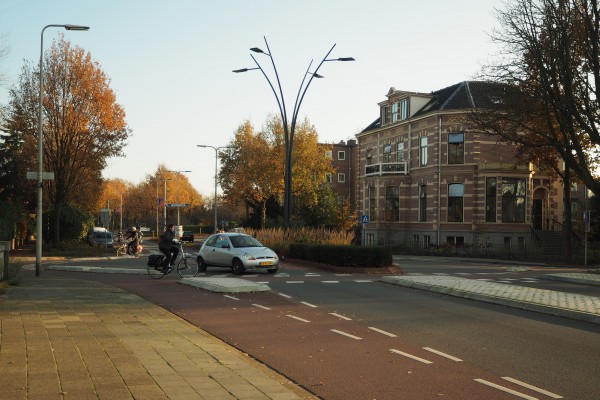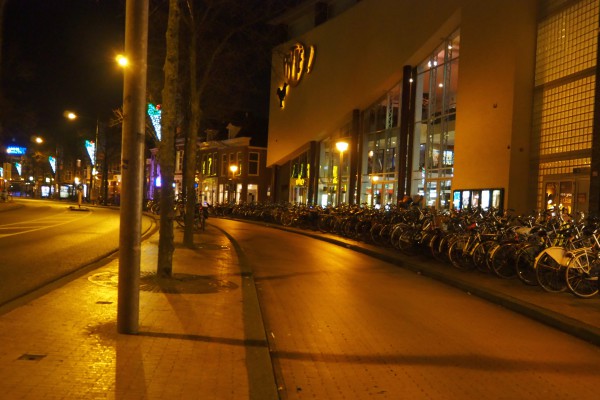Tagged: Zwolle
7 bike facilities Americans can learn from the Dutch
There are many things Americans can learn from Dutch bicycle infrastructure. The infrastructure (in addition to their road safety laws) is so unbelievable well done that the bike modal share is around 30% in the entire country (50-60% in some cities), the traffic fatality rate for all road users is 3X lower than in America, and up to 9X more safe for cyclists per km riding in spite of having kids and adults well into their 80s riding bikes. And the transportation engineers/urban planners don’t stop there; they are constantly improving on it at a rapid rate.
I see grade school kids biking alone to schools, taking field trips in groups, and I even see them taking their bikes onto trains (intercity routes, not within cities). You don’t just see young to middle-aged adults riding but every demographic with relative equal number of males to females including disabled people on their electric-assist wheelchairs on bike paths. Pretty much, how you would see in any population in the world. Everybody!
So, here are a list of seven bike facilities that Americans can copy from the world’s best infrastructure without removing road space for cars. Like I said, there are so much but I am listing the seven obvious ones.
1. Protected Intersections
When I was touring through 15 or so cities, not every road has bike path that is protected from automobiles. The ones that are not segregated are similar to white painted lanes that you see everywhere in America. However, the Dutch know it is absolutely necessary to have protected intersections even though roads have painted lanes. Because more than half of all bike collisions with cars occur at intersections, it is more important to have protected intersections than protected bike paths where space is limited. The protected intersections are clearly marked with red asphalted cross-bikes; shark teethed yield signs for drivers when approaching to make turns; cars are set further behind cyclists when both are waiting; and curb islands at corners to make drivers turn slower and to have a better view ahead. A nice explanation is found here.
2. Bike Traffic Lights
Another way to reduce crashes at crossroads (ones without roundabouts) with cars is to have traffic lights separately for cyclists. In Zwolle, the cycling city of 2014, many of its unprotected intersections have bike traffic lights. Bike traffic lights have sensors too but work in congruence with traffic lights for automobiles. In Groningen, the cycling city of 2002, green bike traffic lights on some busy streets allow all cyclists from every direction to cross. What these bike traffic lights do is that only cyclists are crossing through which makes it safe. Also, these all work because cars are not allowed to make right turns on red which makes bike traffic lights work really well in both unprotected and protected intersections.
3. Roundabouts
Roundabouts in the Netherlands are extremely common as elsewhere in other European countries. Stop signs are uncommon. Stop signs are inefficient and unsafe for both drivers and especially for bicyclists. Roundabouts get more cars moving than Stop signs and reduce wear and tear, and emission. And cyclists won’t need to stop due to momentum. This is actually more predictable for all road users and predictability makes roads safer. Not all drivers stop at Stop signs, and only some bicyclists are willing to stop, so this makes streets unsafe for all road users because of the unpredictability. Secondly, cars are coming from every direction which is also dangerous. At the junctions of roundabouts, roads are narrowed with enough space for cars going into and leaving from one spot where they are crossing. The narrow road brings autos down to a slower speed and if that’s not enough, speed bumps are placed just before the roundabouts to further impede speed.
4. Bike racks at Bus Stops
In cities like Oakland and San Francisco, it is just common sense to have bike parking at transit stations but bike racks at bus stops? Not so much. Multi-modal transport is key to any city’s transportation sustainability, and biking is a huge part of it. Providing bike racks at bus stops is just as important as having bike racks at train stations. BART and Caltrain, both rail transits for the Bay Area, certainly don’t go everywhere so buses are there to compensate. Particularly in the suburban regions, buses are the only public transport so installing bike racks next to bus stops will enhance multi-modal transportation.
5. Bike Ramps
At every bike parking station underground or above ground in the Netherlands, there are bike ramps (and some have bike escalators!) including elevators. Bike ramps are built at an incline that is easy to push up or down the stairs. There is only one bike ramp I found in all underground stations in the Bay Area and that is just pitiful on every level. We have bike parking but no bike ramps. Not all elevators are at every station and if there are, they are slow, cramped and reek of urine. Bikes are not allowed on escalators and how do transit officials expect women to carry their heavy bikes down and up the steep stairs.
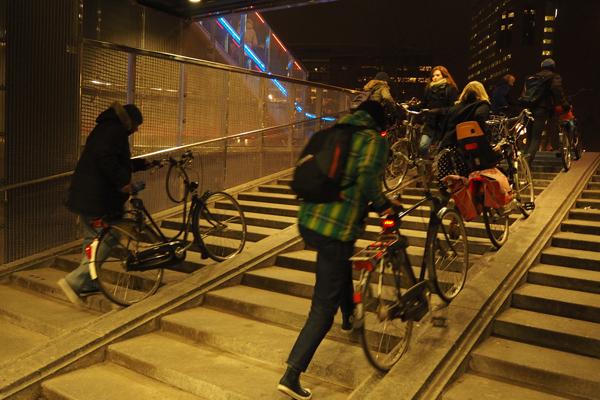
Bike ramps at a bike parking garage in Utrecht. Note the easiness of pushing bikes up and down the stairs.
6. Sidewalks Conversion into Bike Paths in Suburbs/Exurbs
Suburbia and exurbia run rampant in the States and you rarely see people walking on sidewalks. It’s mostly empty. If you think about it, who would walk for such a distance when cars are there in every household? As I was riding between towns and cities, what I noticed surprises me. There are no sidewalks and if there are which is far and few in between, are very narrow. What’s in place of sidewalks are cycle tracks. It’s a brilliant idea! The cycle tracks are actually foot paths as well. The Dutch know that in far flung neighborhoods where cars are the major transport, you are not going to see pedestrians walking much so they turn that space into both foot and cycle paths. We can do that here as well in the States and that won’t impede the all mighty cars’ space.
7. Fietstraat
In some parts of the Bay Area like Berkeley and Palo Alto, there are “bicycle boulevards” that bicycles and cars share residential streets equally and at a low speed. In the Netherlands, fietsstraat (translated as bicycle streets) are taken a step further by turning residential streets into streets for bicycles with cars as guests. And fietsstraat are built to be like cycle tracks with the usual red asphalt (see photo below). Having this type of road design tells who clearly has the priority more and will appeal to inexperienced and risk-averse riders. Because bicycle boulevards are meant to be shared equally between drivers and cyclists and that naturally always puts cyclists as guests, especially when they still look like streets for cars.
Transportation and city officials, if you want to make your city livable for all demographics and reduce traffic fatalities, these are some of the things you can implement without much opposition from drivers. You know bicycle infrastructure is so much cheaper and more beneficial than any type of infrastructure, so let’s get serious and start executing it.
Dutch cycle tracks to die for…Part 2
In the Part 1 of the post, I mentioned about how “beautifully landscaped” cycle tracks are within Dutch city limits. Now, I want to dedicate Part 2 of this post to illustrate how continuous (although, this is very difficult to capture with photos) and wide they can be.
When I was in Den Bosch about a week and half ago, I was fortunate to have Andre Engels and Mark at BicycleDutch to show me around. I remembered Mark telling me that when we were on this route, he said that we didn’t have to stop for 5 km (3 miles). How is that possible, right?
To provide safety from high volume traffic on surface streets, many cycle tracks become continuous via elevated and tunneled cycle tracks (see second and third photos from top). A great example of elevated cycle track to avoid intermixing with cars is the Eindhoven Hovenring. This is what makes riding on Dutch cycle tracks to die for. You can go a really long distance without ever have to stop. I haven’t even brought up about bike paths that go through residential areas and parks, and they are even more continuous.
Secondly, roundabouts at intersections are one of the smartest urban street designs. It’s efficient and I think it makes drivers drive better. What’s even smarter is the protected roundabouts for cyclists. I am not going into safety for now, but this is how you get cyclists riding continuously without losing momentum. Most roundabouts at low auto traffic volume usually are of this type which cars by law are supposed to yield to you while you keep riding through (the above photo is a specific type of roundabout for cyclists which is the first of its kind, described here).

This Arnhem’s cycle track is as wide as the road for Bus Rapid Transit. You can have 4 riding abreast!

Really wide cycle track in city center of Apeldoorn. Note car parking is to the left of the cycle track.
Finally, in the previous post, I did briefly mentioned that many Dutch cycle tracks are wide to accommodate conversational cycling but didn’t exactly emphasize the wideness. Immediately outside city centers, cycle tracks become ridiculously wide and I love it! Some cycle tracks inside city centers are relatively wide too, as can be seen in the above photos. The wideness makes passing another cyclist easily. I never have trouble passing other cyclists and most of the time, I don’t have to ring my bell. The wideness also makes it easy to have all kinds of cargo bikes on them.
In addition, it can hold more cyclists particularly during peak hours. At every single light that turns green for bicycles, the last cyclist in the peloton always have time to cross. I know this because I am always the last one.
Some commenter said to me, “why the need to go see touristy attractions when you got cycle tracks?” This is so true. I am always amazed just being on them.
